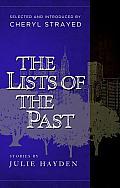 A twelve-year-old boy moves with his family to Guadalajara after his father is caught having an affair with a student; sexy stuff and trouble ensues.
A twelve-year-old boy moves with his family to Guadalajara after his father is caught having an affair with a student; sexy stuff and trouble ensues.
(from Tin House 60, Summer 2014)
In America we weren’t allowed to roam the streets after the streetlights came on. But in Mexico, we discovered that our parents had relaxed their policies, for reasons we did not understand. There were streetlights in Mexico, too. Julian and I realized, after only a week in the neighborhood, that we could slip out of the apartment after dinner without being questioned or given a return time. We would rejoin the ongoing antics of the kids on the street–setting things alight, hunting rats in the ravine with slingshots.
I’ve never heard of Kenneth Calhoun before, though his bio tells me he has recently published a novel, Black Moon, which I will now have to read. I liked this story a lot. The voice of our twelve-year-old narrator is so certain and charming, and the details about living in Mexico feel very real. I love this: ”The apartment was new and looked very much how a Mexican-themed apartment in California would look. It had extremely hard wooden furniture that was painted bright colors. All the chair backs went up at exactly ninety-degree angles, making for a stiff sit.”
The story is basically about a boy exploring his sexuality at the same time that his philandering father is trying to right past wrongs, and not doing a terribly good job of it. The characters here are all very well drawn with the exception, perhaps, of the narrator’s younger brother Julian, who is presented rather one-dimensionally (“He was three years younger and liked to pretend he was a religious superhero called the Altar Boy.”) Nine-year-olds can be rather one-dimensional, though, and it didn’t bother me much.
Here’s an excerpt from Calhoun’s novel, which sounds really interesting, about a world overtaken by insomnia (I can relate as I’ve been waking up at three am for the past two weeks and can’t seem to break the cycle).
Tin House is damn good. I love their Lost & Found section and always find treasures to add to the list of books I have to read. Pick up the issue. Read Meg Freitag’s poems first and then begin at the beginning.
 A mother panics as a bear shakes apples from a tree near her son.
A mother panics as a bear shakes apples from a tree near her son. 







